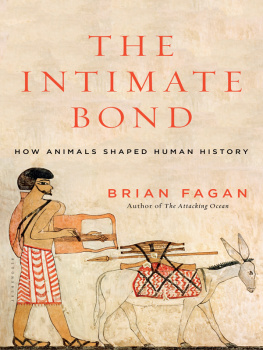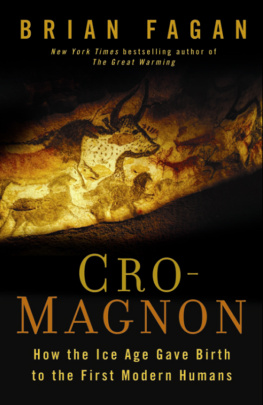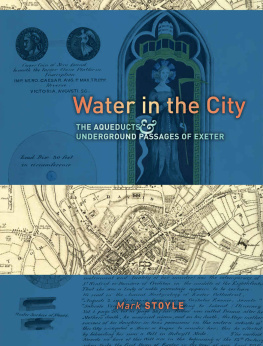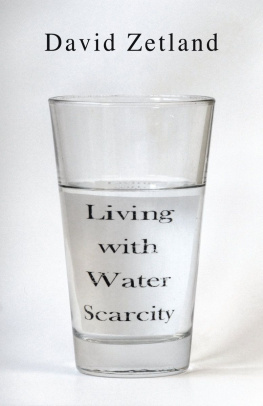Cro-Magnon: How the Ice Age Gave Birth to the First Modern Humans
Where We Saw a Whale: The Story of Lake Clark National Park, Alaska
The Great Warming
Fish on Friday: Feasting, Fasting, and the Discovery of the New World
From Stonehenge to Samarkand (editor)
Chaco Canyon: Archaeologists Explore the Lives of an Ancient Society
Before California
The Long Summer: How Climate Changed Civilization
The Little Ice Age: How Climate Made History, 13001850
Egypt of the Pharaohs
Floods, Famines, and Emperors
Into the Unknown
From Black Land to Fifth Sun
Eyewitness to Discovery (editor)
The Oxford Companion to Archaeology (editor)
Time Detectives
Kingdoms of Jade, Kingdoms of Gold
Journey from Eden
Ancient North America
The Great Journey
The Adventure of Archaeology
The Aztecs
Clash of Cultures
Return to Babylon
Quest for the Past
Elusive Treasure
The Rape of the Nile
Elixir
A H ISTORY OF W ATER AND H UMANKIND
Brian Fagan

Copyright 2011 by Brian Fagan
All rights reserved. No part of this book may be used or reproduced in any manner whatsoever without written permission from the publisher except in the case of brief quotations embodied in critical articles or reviews. For information address Bloomsbury Press, 175 Fifth Avenue, New York, NY 10010.
Published by Bloomsbury Press, New York
LIBRARY OF CONGRESS CATALOGING-IN-PUBLICATION DATA
Fagan, Brian M.
Elixir : a history of water and humankind / Brian Fagan. 1st U.S. ed.
p. cm.
Human history of water
Includes bibliographical references and index.
ISBN-13: 978-1-60819-003-4 (hardcover)
1. Water. 2. WaterHistory. 3. WaterSocial aspectsHistory. 4. Water and civilizationHistory. I. Title. II. Title: Human history of water.
GB671.F34 2011
553.7dc22
2010032082
First published in the United States by Bloomsbury Press in 2011
This e-book edition published in 2011
E-book ISBN: 978-1-60819-357-8
www.bloomsburypress.com
For
My best girls
Alexa, Ana, Juno, Lesley, and Pipette
Now John, quod Nicholas, I wol nat lye;
I have yfounde in myn astrologye,
As I have looked in the moone bright,
That now a Monday next, at quarter nyght,
Shal falle a reyn, and that so wilde and wood
That half so greet was nevere Noes flood.
This world, he seyde, in lasse than an hour
Shal al be dreynt, so hidous is the shour.
Thus shal mankynde drenche, and lese hir lyf.
Geoffrey Chaucer, The Millers Tale (c. 1390 C.E. )
The tending of the rice plants, from the time of replanting to the harvest, the sensuality of wading in the warm mud, the concentration of nurturing the fragile plants as one would a child, the sense of continuity one gets from finding under ones fingers, during the weeding of the new crop, the half decayed vestiges of the last crop buried in the terrace to fertilize the soil, all these experiences are experiences of the senses and of the body.
Arlette Ottino
Contents
Part I
Part II
Part III
Part IV
Part V
M ANY YEARS AGO , three San hunters and I trekked across southern Africas arid Kalahari Desert on a searingly hot morning at the end of the dry season. We had stalked duiker since dawn, searching unsuccessfully for the elusive antelope in the shady thickets where they settled as the sun climbed in the sky. My companions moved effortlessly, apparently without fatigue or thirst, as I paused to take regular swigs from my water bottle. We came to a dry watercourse and a solitary grove of trees that cast the only shade for miles around in the seemingly waterless landscape. The men paused to rest. One of them examined the dry streambed and dug into the sand with his wooden digging stick. At first, the soil was dry, then it was damp, then, miraculously, water appeared. The hunter crouched, swept the precious liquid up with his hands, and drank deeply. His companions followed; so did I, allowing the water to flow over my sweating face and hands. I have never felt such a close, sensuous connection with the most vital elixir of life. My companions had found water where I had thought there was none. As I got to know them better, I learned something of a new way of looking at the landscape: as an edible and drinkable persona, rich in liquid-bearing plants and hidden water. I realized that San existence depended on the distribution of water across the landscape and on the ancient traditions that passed water knowledge from one generation to the next. Since that defining moment, water has always had a profound significance to me.
I CLOSED MY eyes, listened, and was calmed. The gentle riffle of fountains, of softly flowing water, permeated my senses on that hot afternoon in Granadas Alhambra Palace. Id walked through the hilltop park, famous for its nightingales, never far from the cooling sounds of running water. A few minutes later, I stood in the Court of the Pond, where a great rectangular pool lined by myrtles cools the palace. Goldfish swim in the calm waters. When the crowds are gone, the courtyard exudes a profound serenity. Looking out over the city and the sunburnt hills in the distance, I marveled at the lush oasis around me. Later, I learned that the Islamic architects had built a five-mile (eight-kilometer) conduit to bring water from the Darro River.
The marvels continued at Jannat al-Arif, the Generalife Palace, across a nearby ravine. Nasrid sultan Muhammad III built his summer palace during the first decade of the fourteenth century. He spared no expense on the magnificent landscaping, one of the oldest surviving Islamic gardens in the world. In the Water-Garden Courtyard, arcing jets of water play on your senses as they soar, sparkle, and tumble into a long, rectangular pond. This is a place of colonnades and pavilions for leisure and contemplation; flower beds press on the shimmering pool; the gentle sounds of flowing water add to the impression of paradise. And a human paradise it is, in a harsh land of steep terrain and unpredictable rainfall.
The four rivers of the Islamic paradise are rivers of water incorruptible, which nourish gardens beneath whose trees rivers flow. The Prophet greets the faithful near a pool in paradise named Kauthar. Granadas resplendent gardens are a green oasis, an ideal of serenity and well-being. They epitomize the close relationship between humans and water, common to all societies on earth, yet expressed in all manner of ways, some of them startlingly direct and intimate.
Water: It caresses and comforts us, provides sustenance and refreshment, is something that humanity has cherished since the beginning of history, and means something different to everyone. Water gives us pleasure, as it does at the Alhambra, and has profound sacred qualities. It figures largely in many holy and special placesthe soft murmuring of a sacred spring at Delphi, in Greece; the reflecting pools of Indias Taj Mahal; the reservoirs that surround Angkor Wat, in Cambodia, symbolizing the primordial waters of the universe; the font for holy water in Christian cathedrals. Water evokes serenity, harmony and peaceful existence, the very essence of life, and is commemorated by grand shrines and elaborate rituals in honor of the deities that ensure the continuity of waterand life itself.
Water: We turn a faucet, and it is there for drinking, something we take completely for granted. So commonplace is water in our daily lives that we are indifferent to it and have been for a long time. Years ago, Rachel Carson wrote that in an age when man has forgotten his origins and is blind even to his most essential needs for survival, water along with other resources has become the victim of his indifference. Of all the resources that we rely on for survival in todays world, water is the least appreciated and certainly the most misunderstood. For generations, we in the industrial West have just assumed that fresh drinking water is ours to enjoy and to use with dazzling promiscuity in any way we wish. This shouldnt surprise us in an urban age when almost everyone buys their food as packaged commodities from supermarkets, in an era when many city children never see a cow except in pictures. Water is like beef, milk, and pasta, an integral part of our lives that we never think abouta great mistake.
Next page










